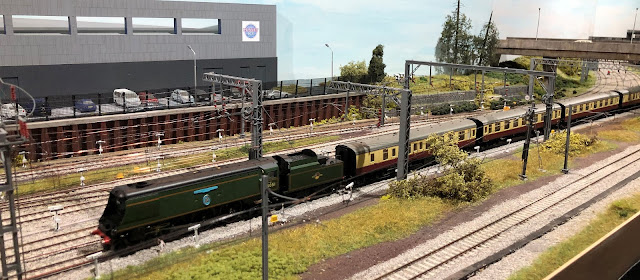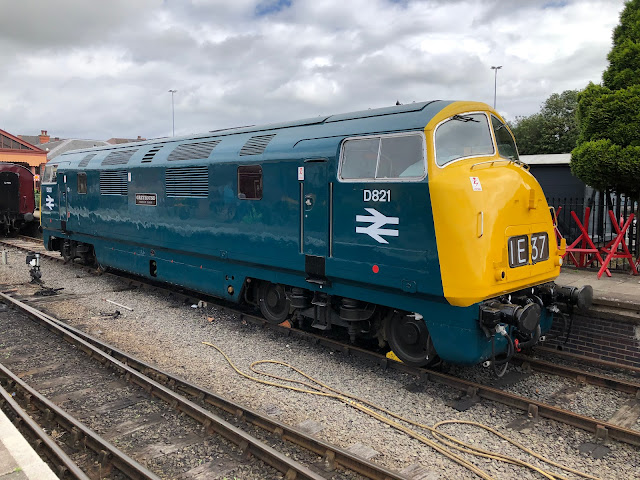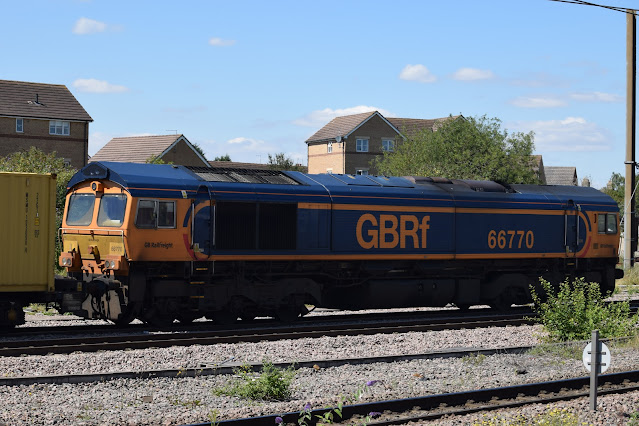We met up in Chester for the Making Tracks 3 model railway exhibition at Chester Cathedral, which runs until 2nd September. Based on Milton Keynes on the West Coast Main Line, the display is organised by Pete Waterman, and run his team of enthusiasts. This is the third and final time it has been to this venue. The man himself was in attendance yesterday to supervise proceedings. The event has been very well attended overall, assuming that the numbers present were a true indication of the support it has received over this month.
We arrived from east and west at Chester station, still a
special place for me and full of memories from the early 1960s, when many days
were spent on the platforms or on the steps leading up to the bridge carrying
Hoole Road over the railway at the north end of the main buildings. The station
concourse area is currently being refurbished, but the elegant façade remains
unchanged. It was built by Thomas Brassey in the Italianate style and opened in
1848. It has Grade II listed status. Train services today are operated by Avanti
West Coast, Northern, Merseyrail and Transport for Wales.
We took lunch at the Fork and Flavour café alongside the
canal tow path between the station and the cathedral, which we are happy to
recommend, as well as the cathedral café itself for a piece of cake and a nice
cup of tea. My Avanti express back to Crewe was detained for half an hour over
a police incident [a trespasser on the track] near Crewe Steelworks signalbox,
meaning I missed my connection by ten minutes. What had been an hourly service
back to Lowdham for most of the day had now suddenly lapsed to a two-hourly one
plus the need for an extra change of train at Nottingham. EMR then provided a
two-car rather than a 3-car Class 170 unit ensuring an overcrowded train with a
number of people left standing in the aisles. In my experience, cross country trains
are often under-resourced in terms of capacity. One is drawn to conclude that
operators don’t care much about over-crowding, when, presumably, multiple units
are considerably more expensive to run.
Extra time at Crewe gave me more time to reminisce over the changing railway scene there, too, plus a couple of photo opportunities, including a returning charter hauled by English Electric Type Four D213 Andania.















































